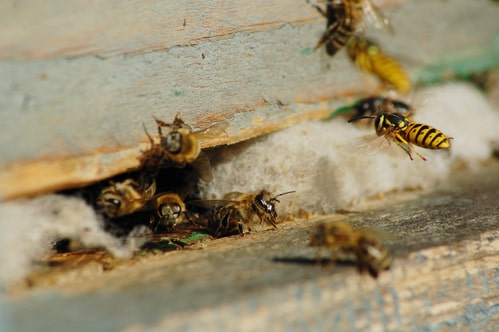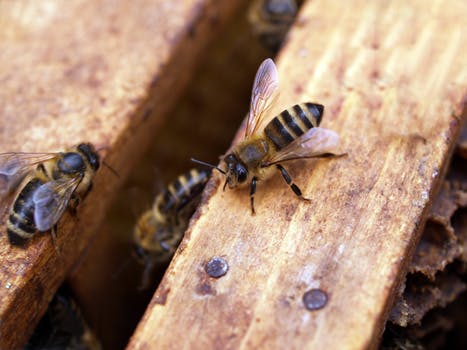Honey bees and wasps are often mistaken for one another because of their similar physical traits and ability to sting. They both serve important ecological roles such as pollinators of flowers and fruit. While these insects may be close in size, they are quite different. Identifying key differences between bees and wasps is important to administer proper first aid for stings and using pest control.

Credits to quora.com
Body type
Honey bees are fuzzy and hairy. Wasps usually have smooth and shiny skin. Wasps have more elongated bodies, longer legs, and a “pinched” waist. Honey bees have more round, compact bodies with flat legs. The average size of bees are 2.5 centimetres while wasps vary in size. When flying, a bee’s legs are usually hidden, while wasps’ legs hang.

Feeding and nutrition
Bees spend most of their lives feeding on nectar and pollen. Their hairy bodies and flat legs are ideal for holding pollen as they fly from flower to flower. Wasps, however, are predators and carnivorous. Their sleek and streamlined bodies are useful when they hunt flies, caterpillars, arthropods, and other insects. Some adult wasps do occasionally feed on pollen, rotten fruit, and nectar.
Behaviour
Wasps and bees differ in lifestyle and habits. Wasps cannot produce honey. Honey bees are social creatures and live in colonies. These bee colonies can have populations close to 100,000; wasps have smaller colonies. In the wild, honey bee hives are often located in the hollows of trees and on rock crevices. Unlike wasps, honey bees do not hibernate. Instead, they remain inside hives, huddled closely together, sharing body heat, and feeding on stored food supplies. The wasp queen builds her colony’s nest. Worker bees create the colony for their queen. Wasps are also more aggressive and ready to sting, while honey bees only sting when they are provoked. While honey bees can sting only once and die after attacking, a single wasp is capable of stinging multiple times.
Honey bees serve a significant role in pollination and ecology. Don’t try to kill them when you see them; leave them alone and they’ll likely do the same for you. If you have a wasp problem or need a nest removed, call professionals to handle it and avoid injury.
Contact a pest control professional to handle a wasp or bee issue on your propertly. For help in Toronto and the GTA, call JDM Pest Control. We won’t introduce dangerous chemicals into your home or work environment. Call us at (416) 729-3568.

